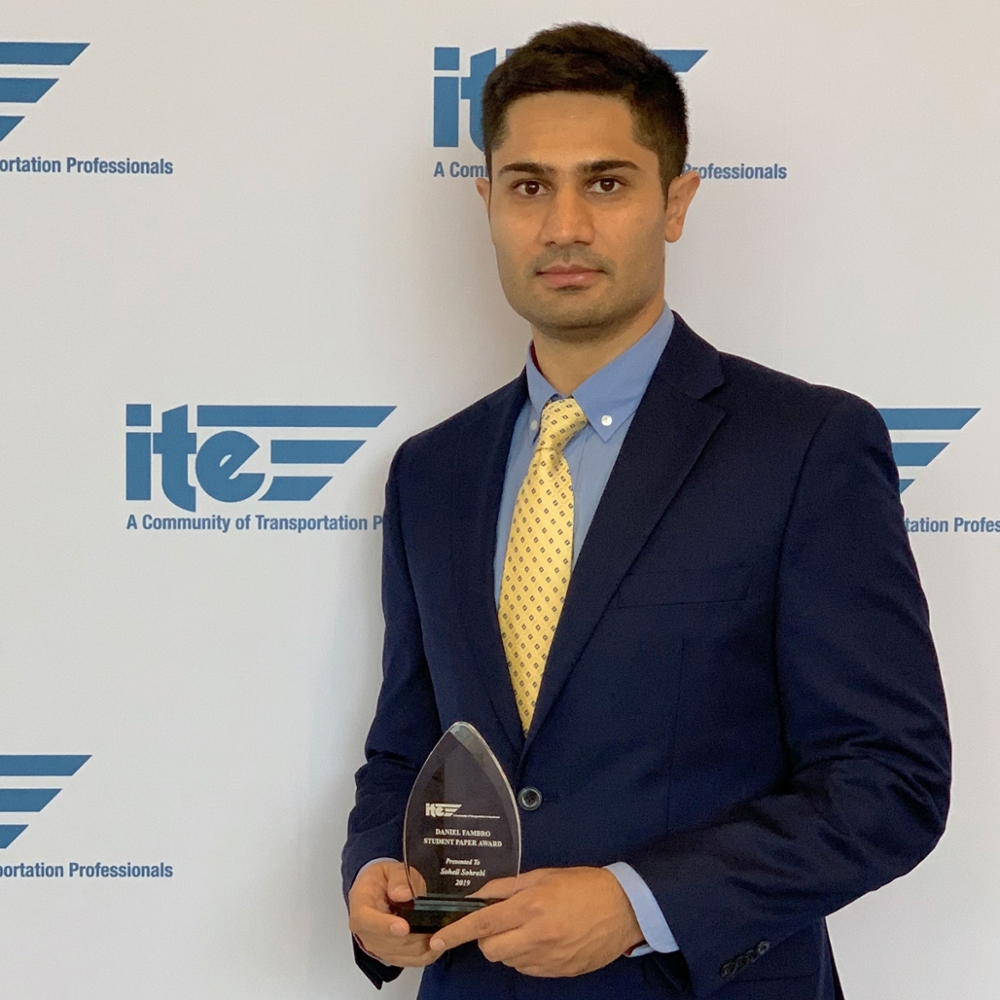
Red light cameras are seen by many as a nuisance, but would they think differently if they knew that these monitors could help save lives? Research by Soheil Sohrabi, a doctoral student in the Zachry Department of Civil and Environmental Engineering at Texas A&M University, has shown that enforcing red-light runners can enhance intersection safety.
As a result of his research, Sohrabi has been named the recipient of Daniel B. Fambro Student Paper Award, an international award sponsored by the Institute of Transportation Engineers which recognizes students who have conducted independent and original research on traffic or transportation subjects. The award is named for the legacy of Daniel B. Fambro, a former professor with the department and associate researcher with the Texas A&M Transportation Institute.
Sohrabi’s paper, titled “Impacts of Red-Light Cameras on Intersection Safety: A Bayesian Hierarchical Spatial Model ,” investigates the impact of red-light cameras on the frequency of motor vehicle crashes. Sohrabi conducts research under the guidance of Dr. Dominique Lord, a professor and A.P. Wiley faculty fellow within the department.
“Our analysis showed that cameras not only reduce crashes at the intersection they are located at but also have impacts on the intersections in the vicinity,” Sohrabi said. “The idea is that drivers, fearing a higher chance that they will be fined, will be more likely to comply with red-lights, lowering the number of crashes. This change in driver’s behavior observed even at intersections without any camera.”
According to Sohrabi, since city resources are limited not all intersections can be equipped with a red-light camera. While intersections with a higher crash frequency are traditionally chosen to be monitored, Sohrabi introduced a framework to find optimum locations of red-light cameras in the network. By ensuring the optimum location of the cameras across the Chicago intersection, the number of injury crashes could be reduced by 13%.
Sohrabi plans to continue to conduct research on traffic safety. Acknowledgment of his research through the Daniel B. Fambro award has given the research an added special significance for him.
“It's a great achievement for my career,” Sohrabi said. “It shows me that I’m headed in the right direction in my career. I am so honored to receive this award which is named after a fellow Aggie.”